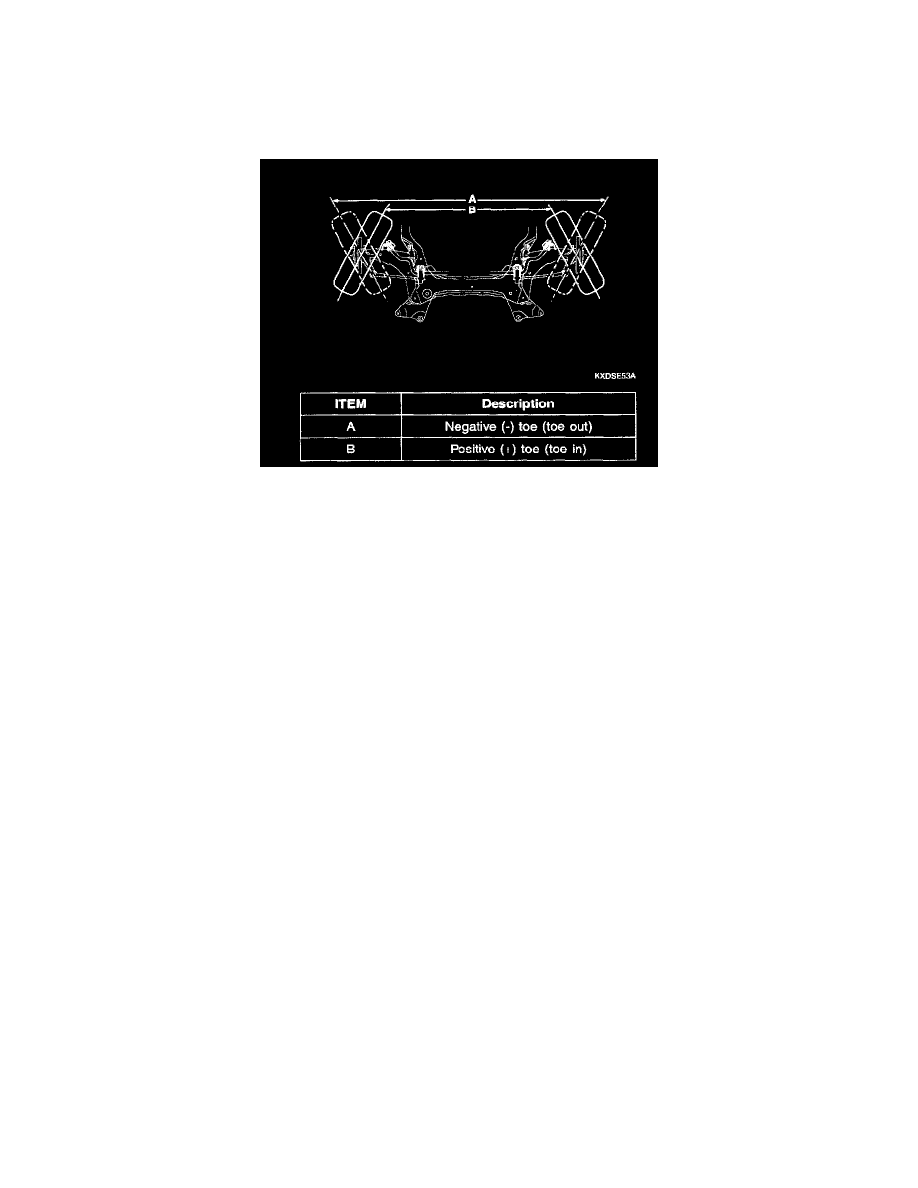Spectra L4-2.0L (2004)

Alignment: Description and Operation
WHEEL ALIGNMENT
FRONT WHEEL ALIGNMENT
When using a commercially - available computerized four wheel alignment equipment (caster, camber, toe) to inspect the front wheel alignment,
always position the car on a level surface with the front wheels facing straight ahead. Prior to inspection, make sure that the front suspension and
steering system are in normal operating condition and that the wheels and tires face straight ahead and the tires are inflated to the specified pressure.
TOE - IN
Toe is a measurement of how much the front of the wheels are turned in or out from the straight - ahead position.
When the wheels are turned in toward the front of the vehicle, toe is positive (+) (toe inch). When the wheels are turned out toward the front of the
vehicle, toe is negative ( - ) (toe out). Toe is measured in degrees, from side to side, and totaled.
Toe - in (B - A or angle a+b) is adjusted by turning the tie rod turnbuckles. Toe - in on the left front wheel can be reduced by turning the tie rod
toward the rear of the car. Toe - in change is adjusted by turning the tie rods for the right and left wheels simultaneously at the same amount as
follows.
Standard value
Toe - in (B - A) mm (inch): 0±2 mm (0±0.08 inch)
NOTE:
-
Toe - in adjustment should be made by turning the right and left tie rods at the same amount.
-
When adjusting toe - in, loosen the outer bellows clip to prevent twisting the bellows.
-
After the adjustment, tighten the tie rod end lock nuts firmly and reinstall the bellows clip.
-
Adjust each toe - in to be the range of ±1mm.
Tie rod end lock nuts tightening torque: 50 - 60 Nm (500 - 600 kgs-cm, 37 - 43 ft. lbs.)
